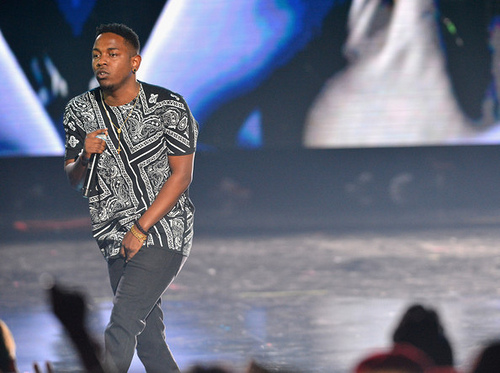With To Pimp a Butterfly, Lamar soars to new heights
On March 16, Kendrick Lamar released his newest project, To Pimp A Butterfly (TPAB). Up until its release, little was known about TPAB aside from the release of two singles – “i,” and “The Blacker the Berry.” But nothing could have possibly prepared Kendrick fans for what they received with this project – a highly complex, incredibly dense, and sonically adventurous tour de force.
Let’s wind back a few years for context. With the release of Good Kid m.A.A.D City (GKMC) in October 2012, Lamar went from rap’s underdog to one of its top players. Just less than a year later, Kendrick dropped an ambitious and highly controversial verse on Big Sean’s “Control,” officially commencing his reign as the King of Rap. Ever since, the music community has been eagerly awaiting Kendrick’s second major label album; many wondered how Kendrick could possibly top GKMC, which received rave reviews from critics and fans alike.
As with Kendrick’s two previous releases, TPAB is not merely a series of songs; it is essentially a collection of vignettes that are pieced together with spoken word delivered throughout the album. The message is multifaceted – there are themes of self-loathing, racial discrimination and rebirth.
The first two tracks set the sonic tone for the album. The opener, “Wesley’s Theory,” featuring vocals from funk legend George Clinton and instrumentation from bass virtuoso Thundercat, is pure funk. But Kendrick is not merely imitating the p-funk of the 70’s, he’s giving TPAB its own distinct aesthetic. The second track, “For Free? (Interlude),” flips to pure jazz. Kendrick shows his incredible vocal versatility here (as he does on the entire album) as he speedily raps about being taken advantage of financially by a girlfriend and by the government (an idea established in “Wesley’s Theory”).
With these two tracks, Kendrick establishes early on that this will not be another Good Kid m.A.A.D. City — this is a beast of its own, one that tackles a broader range of issues than its predecessor. In “u,” perhaps the album’s most powerful song, Kendrick is berated by his conscious for neglecting his family and friends in Compton after becoming famous. Kendrick’s broken, emotional delivery is heart-wrenching, especially as you hear him swig down bottles of liquor. This song is the antithesis to “i,” the album’s penultimate track; whereas “i” is about loving and accepting yourself, “u” depicts a state of near suicidal self-hate.
The theme of being morally corrupted by fame continues with “For Sale? (Interlude),” where Lucifer (referred to as “Lucy”) lures Kendrick into “signing a contract” with her. The instrumental is lush and layered, comforting yet eerie, making it a perfect complement to Kendrick’s lyrics.
The album then shifts as Kendrick returns home and reconnects with his roots. He finds himself up to his old shenanigans with his homies on “Hood Politics.” He also continues to make bold statements about the government exploitation of black people, likening Democrats and Republicans to Crips and Bloods.
“The Blacker the Berry” is the most racially charged song of the album. It presents discrimination and the African-American struggle as dynamic issues. Kendrick angrily confronts racists and the history of oppression in this country. But he also confronts lack of self-respect in some black communities and black-on-black crimes. He spits over a beat reminiscent of the hardcore boom-bap days of the early nineties. Assassin, who also appeared on Kanye West’s “I’m In It,” delivers a fantastic hook that adds to the intensity of the track.
The album closes perfectly with “Mortal Man,” a 12-minute epic that contains a 7-minute posthumous “interview” with Tupac. The idea is incredibly innovative and powerful. In a sense the interview gives the album context, but it does not provide closure. Kendrick reminds us that there is still much work to be done.
An artist can be influential not only through the music he or she creates, but also the ambition displayed. Kendrick’s ambition is rare. Instead of taking the safe route and creating a copy of GKMC, Kendrick was bold. With TPAB, Kendrick embraces the album as a true piece of art, and by doing so, he has transcended rap. Now the only question is, how will he top this one?
RATING: 10/10

